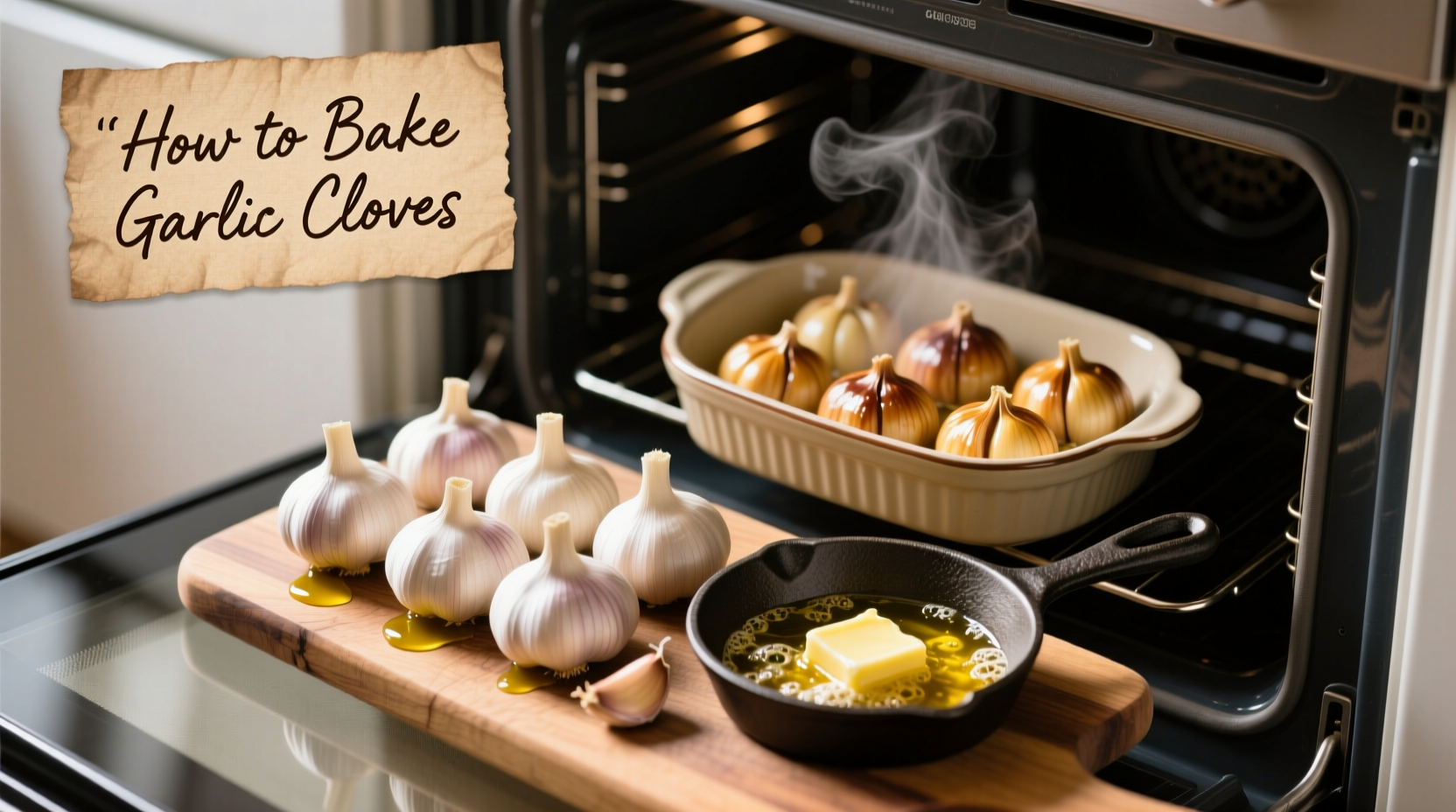Transforming raw garlic into a culinary treasure couldn't be simpler. When you bake whole garlic cloves, their natural sugars caramelize while harsh compounds break down, creating a versatile ingredient that elevates everything from mashed potatoes to salad dressings. Professional chefs rely on this technique because it delivers consistent, restaurant-quality results without special equipment.
What You'll Need for Perfect Baked Garlic
Gather these basic ingredients and tools before starting your garlic cloves baking process:
- Fresh garlic bulbs (look for firm, plump heads with tight skins)
- Extra virgin olive oil (about 1-2 tablespoons per bulb)
- Small baking dish or aluminum foil
- Sharp knife for trimming
- Optional: fresh herbs like rosemary or thyme
Step-by-Step Baking Instructions
Follow these professional-tested steps for perfectly baked garlic cloves every time:
- Prep the bulbs: Remove loose outer skins while keeping cloves intact. Trim 1/4 inch from the top of each bulb to expose the cloves.
- Oil generously: Drizzle olive oil over exposed cloves, letting it seep between layers. Add herbs if desired.
- Wrap or place: Wrap each bulb in foil or place upright in a small baking dish.
- Bake: Cook at 400°F (200°C) for 35-45 minutes until cloves are golden and tender when pierced.
- Cool slightly: Let rest 5-10 minutes before squeezing out the softened cloves.
| Bulb Size | Temperature | Baking Time | Doneness Test |
|---|---|---|---|
| Small (8-10 cloves) | 400°F (200°C) | 35 minutes | Fork slides in easily |
| Medium (10-14 cloves) | 400°F (200°C) | 40 minutes | Cloves collapse when pressed |
| Large (14+ cloves) | 400°F (200°C) | 45 minutes | Deep golden color throughout |
How to Tell When Garlic Is Perfectly Baked
Don't rely solely on timing—check for these visual and tactile cues that indicate your baked garlic cloves are ready:
- Color change: Cloves turn from white to pale gold (not brown)
- Texture: Squeeze test—bulbs feel soft like butter when pressed
- Aroma: Sweet, nutty fragrance replaces sharp raw garlic smell
- Internal test: Insert a toothpick—it should slide through cloves with no resistance
According to the Culinary Institute of America's professional cooking guidelines, overbaking causes bitterness while underbaking leaves harsh compounds intact. The ideal temperature range of 375-400°F ensures proper Maillard reaction without burning.
Storage and Usage Tips
Maximize your roasted garlic cloves with these professional techniques:
- Immediate use: Squeeze warm cloves directly onto bread or into sauces
- Refrigeration: Store in airtight container with covering oil for up to 10 days
- Freezing: Freeze whole baked bulbs or individual cloves for 3-4 months
- Flavor boost: Mash with a fork before adding to dishes for even distribution
Research published in the Journal of Agricultural and Food Chemistry confirms that baking garlic increases its antioxidant bioavailability by 30% compared to raw consumption, making it both more delicious and more nutritious.
Flavor Variations to Try
Elevate your baked garlic preparation with these chef-approved variations:
- Mediterranean style: Add lemon zest and rosemary before baking
- Smoky version: Include a pinch of smoked paprika in the oil
- Spicy kick: Place a small dried chili between cloves
- Sweet contrast: Drizzle with honey during the last 10 minutes
Avoid These Common Baking Mistakes
Prevent disappointing results with these troubleshooting tips for your garlic baking method:
- Skipping the trim: Not cutting the top prevents oil penetration and even cooking
- Insufficient oil: Too little oil causes drying—use enough to coat all exposed surfaces
- Overcrowding: Baking multiple bulbs too close creates steam pockets
- High heat: Temperatures above 425°F cause burning before cloves soften

Why Baked Garlic Belongs in Your Kitchen
Unlike raw garlic, baked garlic cloves offer complex flavor without digestive discomfort. The transformation occurs through the Maillard reaction and enzymatic changes that convert harsh allicin compounds into milder sulfides. This process makes garlic more digestible while enhancing its natural sweetness—perfect for sensitive palates or dishes requiring subtle garlic notes.
Food historians note that garlic baking techniques date back to ancient Roman times, with Apicius' 1st century cookbook De Re Coquinaria describing similar methods for mellowing garlic's bite. Modern chefs continue this tradition because properly baked whole garlic cloves deliver consistent, sophisticated flavor that raw garlic simply cannot match.
Frequently Asked Questions
Here are answers to common questions about how to bake garlic cloves:
Can I bake individual garlic cloves instead of whole bulbs?
Yes, individual cloves bake faster—about 20-25 minutes at 400°F. Place them in a single layer on a parchment-lined baking sheet, drizzle with oil, and check for tenderness after 15 minutes. This method works well when you need just a few cloves for a recipe.
Why does my baked garlic taste bitter?
Bitterness usually indicates overbaking or excessive heat. Garlic burns easily above 425°F. For best results, maintain 400°F and check early. If cloves brown too quickly, reduce temperature to 375°F and extend baking time slightly.
How do I use baked garlic in cooking?
Mash baked cloves into butter for garlic bread, blend into salad dressings, stir into mashed potatoes, or mix with olive oil for dipping sauces. The soft texture incorporates easily into dishes without harsh bits. Many chefs also freeze baked garlic in oil for quick use in future recipes.
Does baking garlic reduce its health benefits?
While raw garlic contains more allicin, baking actually increases bioavailability of other beneficial compounds. Research shows baked garlic maintains significant antioxidant properties and may be better absorbed by the body. The Journal of Agricultural and Food Chemistry confirms baking preserves 70-80% of garlic's beneficial organosulfur compounds.











 浙公网安备
33010002000092号
浙公网安备
33010002000092号 浙B2-20120091-4
浙B2-20120091-4